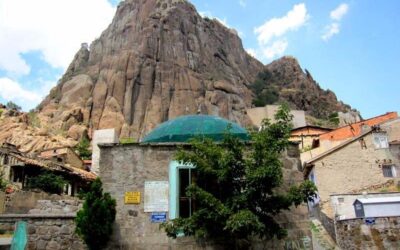Grand Mosque of Adana
- The Great Mosque of Adana (Turkish: Adana Ulu Camii), also known as the Ramazanoglu Musjid (Turkish: Ramazanoğlu Camii), is a 16th-century Musjid located in Adana, Turkey. It is part of a külliye, or complex, that includes a madrasah and a türbe (mausoleum). The buildings are situated on Kızılay Street, adjacent to the Ramazanoğlu Hall.
The Musjid
- The Great Mosque showcases elements of Mamluk, Seljuk, and Ottoman architectural design. The western entrance, which predates the main structure, exhibits a different style from the section constructed by Ramazanoğlu Halil Bey. The entrance features a conical stalactite roof, characteristic of Seljukid architecture. This suggests that the Ramadanids, a small beylik (emirate) in the early 16th century, initially built a modest Musjid. As the beylik expanded and the small Musjid became insufficient, the main building was added alongside it.
The Madrasah
- The madrasah is located on the east side of the Musjid and is referred to in early documents as the ‘Old Madrasah’. It features simple and clear stonework and includes a fountain supported by eight columns with a pyramidal roof, giving it a spacious appearance. However, due to a small masjid in the northwest corner and an unrelated building beside it, the madrasah does not present a well-planned, monumental view.
Mausoleum outside the Musjid Complex
- South of the Musjid stands an independent mausoleum with a hexagonal plan and a high dome. There are no inscriptions on the sarcophagi inside, so the identities of the occupants and the construction date are unknown. Given its proximity to the mausoleum of the Musjid, it is believed that the sarcophagi may belong to members of the Ramadanid family. The mausoleum’s baroque style indicates it was likely built towards the end of the 18th century.








